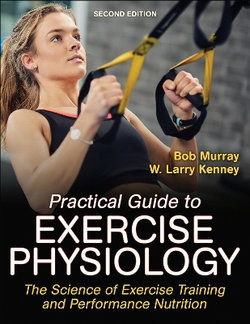Science comes to life with
Practical Guide to Exercise Physiology, Second Edition. Taking an application-based approach, supported by vivid medical illustrations, this book provides students and health and fitness professionals with a simple and straightforward way to learn the fundamentals of human physiology, metabolism, and nutrition.
Intricate physiological processes responsible for how the body responds and adapts to physical activity are described in an accessible manner so that readers can easily select appropriate training programs and explain them to others.
Practical Guide to Exercise Physiology, Second Edition, is complemented by medical artwork that puts these complex systems into a digestible visual context. These systems are then applied to real-world practice and training principles that are beneficial to specific body systems to achieve the desired results.
Part I of
Practical Guide to Exercise Physiology, Second Edition, reviews human physiology fundamentals, including muscles and muscle adaptation, bioenergetics, and the cardiorespiratory system. Part II applies these scientific concepts to training programs designed for specific fitness goals. These goals include weight loss and improvements in strength and muscle mass, speed and power, and aerobic endurance. Part III of the text outlines special considerations for training with pregnant women and children as well as older adults. This part also includes exercise adjustments for changes in temperature and altitude.
The second edition of
Practical Guide to Exercise Physiology features new content on trending fitness concepts such as HIIT, periodization, and detraining. The text also provides several useful tools for practical application:
- Fun facts and sidebars examine current topics and engage readers with additional content about the human body's response to training.
- At the end of each chapter, summary statements and review questions highlight essential information.
- Performance Nutrition Spotlights offer advice and tips on using nutrition to support adaptations and improve performance.
- The Index of Common Questions From Clients section collects the most common inquiries from clients and points to the corresponding chapter where each of those topics is covered, helping readers to quickly access the information.
Practical Guide to Exercise Physiology, Second Edition, contains all the information students and fitness professionals need to understand the connection between physiology and exercise. Readers will gain confidence in designing exercise programs for various populations and in their ability to explain to clients how each exercise and movement will help them achieve their goals.
Earn continuing education credits/units! A continuing education exam that uses this book is also available. It may be purchased separately or as part of a package that includes both the book and exam.




Share This Book: